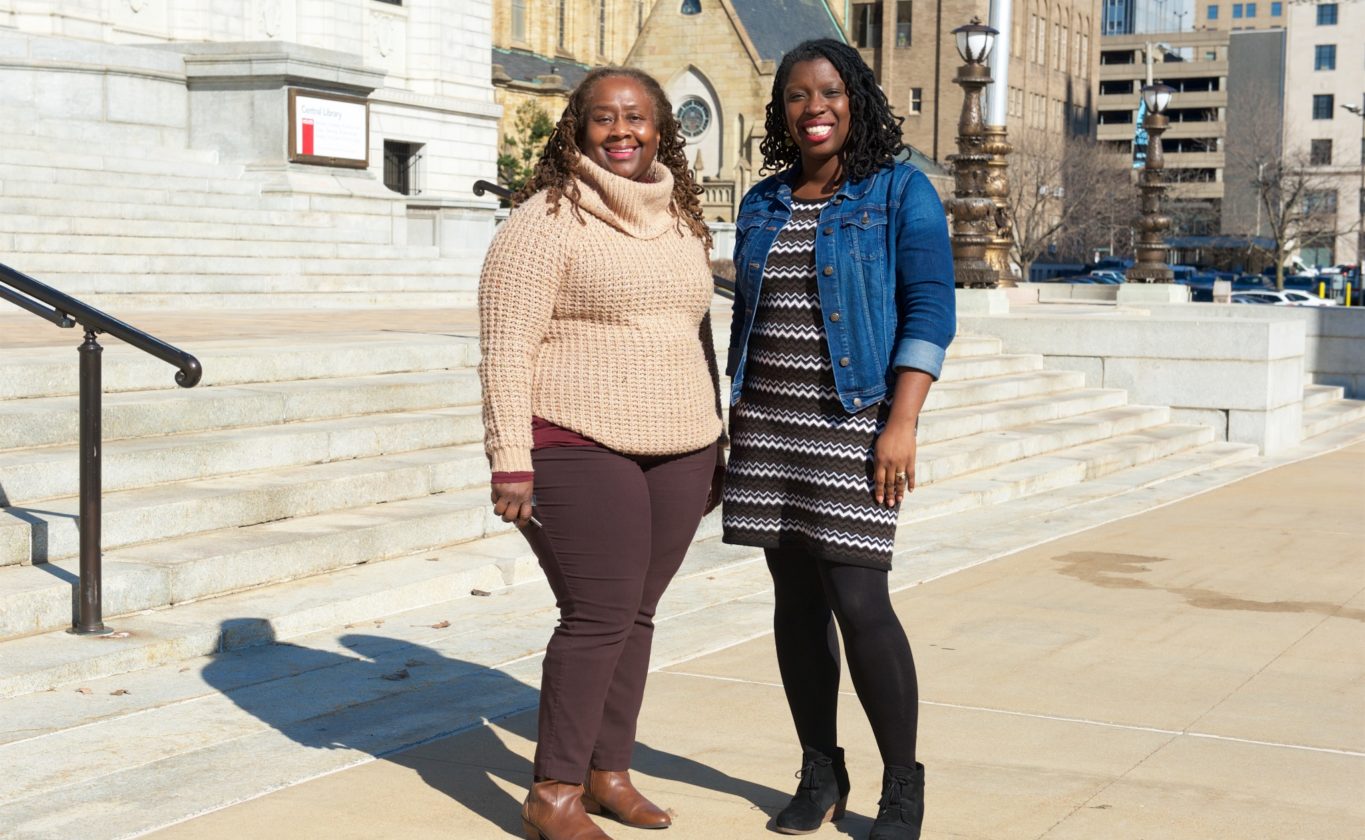This is part of the #STL2039 Action Plan storytelling series in partnership with Humans of St. Louis.
Riisa Rawlins: I work in a couple of spaces right now. I work as the lead consultant for the System of Care – St. Louis Region. That initiative looks at the children’s behavioral health service system and tries to understand how we create mechanisms, infrastructure, and relationships to work in partnerships so that it’s easier for folks seeking services and support to access what they need in our community. So understanding how critical behavioral health is and how it intersects with so many other domains. It doesn’t just happen in one place or in one sector. Can we ease the burden from folks seeking care so that they can go where they know to go and where they’re comfortable going? And then we, on the back end, can figure out where the right spot is and learn how to both do what we do really well to make sure that children and families are getting what they need and improving outcomes, but also collaborate well so that we can make sure that they’re getting into all the right spots without having to dip in and out of the system. So I spend my time and energy thinking more on a macro systems level about what barriers exist that make the children’s behavioral health service system difficult for folks seeking care and direct service staff. And what agency do we have to alleviate some of those barriers so we can practice the hard work of collaboration.
The core principles for that work that helps ground what we do every day is for it to be youth-driven, family guided, community-based, culturally and linguistically appropriate, and trauma responsive. So if we’re not touching on each of those elements of the work, there’s something that’s missing. How do you pull all those complex pieces together? How do you create infrastructure and relationships so that when funding goes away, or when personalities shift and change, or there are different people in the room, the work still remains and the youth and families are at the center?
There is no health without mental health.
I have also recently embarked on another adventure, and I’m now a faculty with the School of Social Work at the University of St. Louis. I coordinate the Behavioral Health Workforce Education and Training Program which looks at training social workers to be able to use an integrated lens when they think about care. So when we’re going out into practice, making sure that we’re looking at the entire person and that we are connecting them to all of the services and supports that they need. Understanding as the moniker goes, “There is no health without mental health.” So how do we think about working in a more collaborative team approach in integrated settings, which also includes preparing the field. What exists already? How are folks trying to work in partnership and collaboration? And what resources would be helpful for them to continue to do that difficult, meaningful, groundbreaking work in ways that improve outcomes that allow us to have a different and elevated level of accountability and that give us the networks and support that we need to be able to do it well with a prepared workforce?
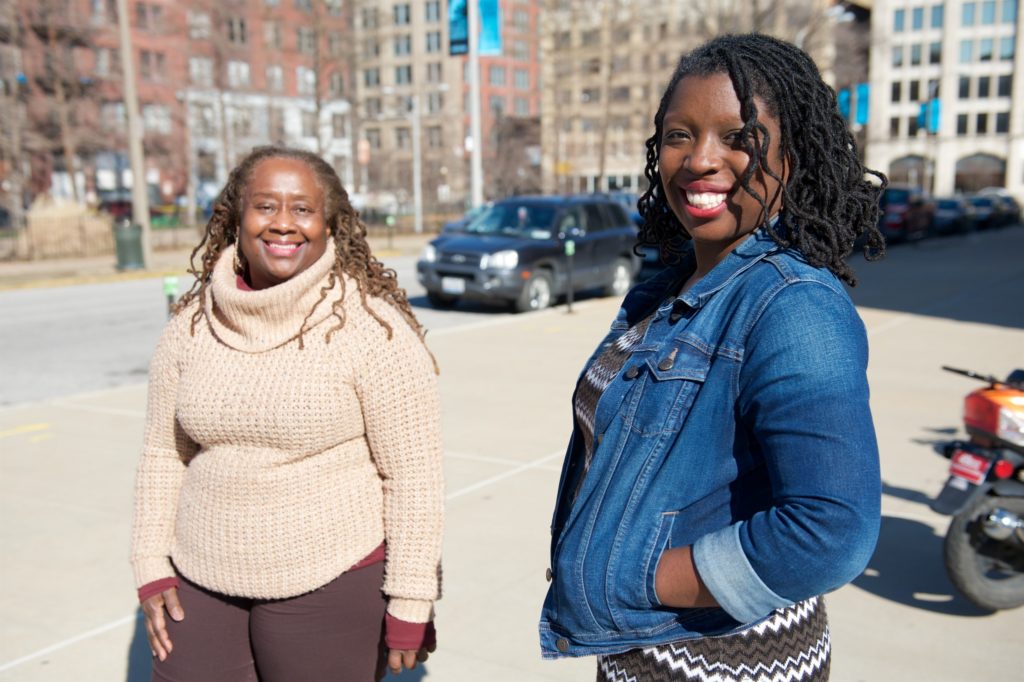
Vetta Sanders Thompson and Riisa Rawlins. (Photostory by Lindy Drew/Humans of St. Louis.)
I’m trying to find ways to work with Vetta every time that I can! The first time I met Vetta, was when I was working with the St. Louis Regional Health Commission, and they brought me on board to work on the Eastern Region Behavioral Health Initiative that looked at convening and coordinating the behavioral health service sector in the St. Louis region. Part of the work was called Reducing Stigma and Increasing Cultural Competence. Bethany Johnson-Javois kept calling me and saying, “You should do this work,” and I was like, “But it’s not about kids. You know I work with kids. I don’t even understand why you’re calling me for this work.” She said, “No, but it’s about justice and equity.” “Wait. Wait, what? Okay, well, maybe I can think about it even though it’s not with kids. Maybe there’s an opportunity to kind of push this work lower because we start too late anyway.”
So I got to work with Vetta as chair of the work, and it was some of the coolest work I have ever done in my life because it was audacious. We were tasked with developing and implementing a training on reducing stigma and increasing cultural competence among service providers. Often, you say cultural competence, and people say, “Oh, we already did that. We checked it off the list.” And I’m thinking, “No, no, no. It’s not a thing. This is a process that we continue to do throughout our existence. What are you talking about?” And then you say stigma to behavioral health service providers, and you hear, “We provide behavioral services. We don’t stigmatize our clients.” “Except if you ask clients, they’ll actually tell you that you do.” So we got to wondering, “How do we operationalize this so that people aren’t shutting the door before we’ve opened our mouths? Because no one wants to hear stigma. No one wants to hear cultural competence. And no one wants to think that they fall short in these practices because we like to see ourselves as these enlightened, evolved human beings.”
So we thought, “Hey! What about RESPECT?” We engaged Joel Slack, a phenomenal international presenter who helps people understand how to tell their stories in ways that are meaningful and transformative. He speaks poignantly about his experience with mental health and his first episode of psychosis. And I have never in my life listened to anyone tell a story that was so compelling. He didn’t just talk about what was going on mentally. He talked about what it felt like physically, and how his whole being was so impacted by this experience, it was gripping. He said there was a nurse who saw him not as his diagnosis, not as his experience, but as himself. And she treated him with a level of respect that made him, for the first time, believe, “I am a person and I can get better.” So he talked about how transformative it is when providers come into a room with that foundational, fundamental attitude of respect and what that meant for his recovery.
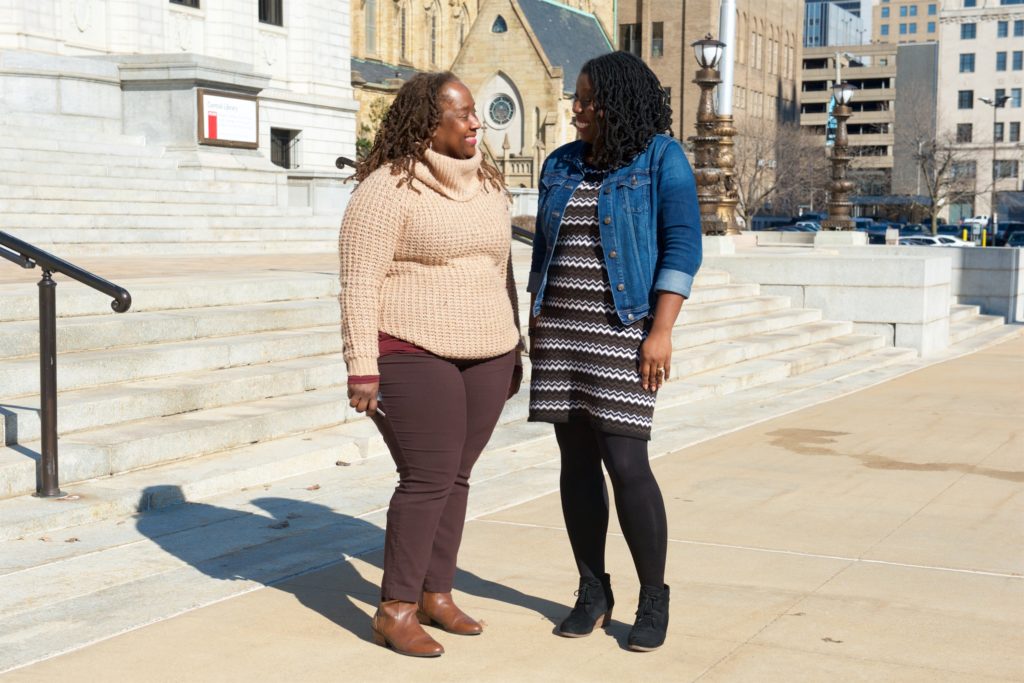
So now we had this amazing person, Joel, coupled with this amazing person, Vetta, who is talking about cultural competence and what that means and how it’s a process; and it’s relatable. The thing I love about Vetta is that she is an academic, and she can bring it to you in that way if you need her to; however, she breaks it down as a person in real words, too. Like, “I understand what you’re saying and I can see myself in that.” So, we thought, “Okay, we have this framework. RESPECT. We’re not going to hit people with ‘stigma’ and ‘cultural competence,’ because they don’t care and they don’t want to talk about that.” But if we said, “We want to treat clients respectfully,” who’s going to say no to that? Everyone’s signing off on, “Yes, we want to have a respectful environment.” So, that’s how he did it. We also decided that we wanted to have a training that included direct service staff, CEOs and executive leadership, and individuals seeking services and their advocates and supporters at the same table, receiving the same message. People told us, “You’re not going to do that. You’re not going to get doctors and CEOs to come into a room with clients.” And we were like, “Except for that we are and we’re going to talk about respect. That is respect.”
That was some of the most energizing work. From that, we developed the Guiding Principles of Respect unanimously approved by the Regional Health Commission. There were providers that actually changed some of the practices and policies in their organizations, too. The check-in process for example: when you go in to see your doctor there may be an open glass partition, you are greeted and you sign in. Clients described going to see their mental health service provider and seeing a closed frosted glass partition. After knocking, the partition would slide open, there was no warm greeting. And after signing in, the glass would close again until they were called back for their appointment. That’s gone. Providers decided, “We’re not doing that anymore.”
I absolutely dug into the hard work – the bold, audacious work – because that’s the stuff that’s important.
That was when I understood that integration was so critically important. That was where I understood that there was a pathway to open the door to further conversation around issues of justice and equity, even though folks don’t necessarily want to hear it initially. That was where I absolutely dug into the hard work – the bold, audacious work – because that’s the stuff that’s important. It’s absolutely transformative. And if you’re willing to have a little grit, and stick it out, and not take no for an answer, then you can actually move mountains. I am super happy to put on my Pollyanna, like, “Oh, well, we have tried this. We can try it this way. Oh, you did it that way before? Well, how about…” I’m super happy to go into that space and to put on that hat if that’s what needs to happen to move the conversation forward, and I’ll hold hope until you’re able to see where difference can be made.
And the other thing that was really transformative for me was learning that it’s not typical to have these conversations at the table with persons who are experiencing those services and interventions. You’re missing so much when you’re not talking to the folks who are experiencing it and when you’re not talking to the frontline boots-on-the-ground staff who are working with it day-to-day. You do not have a panel of experts if you’re not including those two lenses.
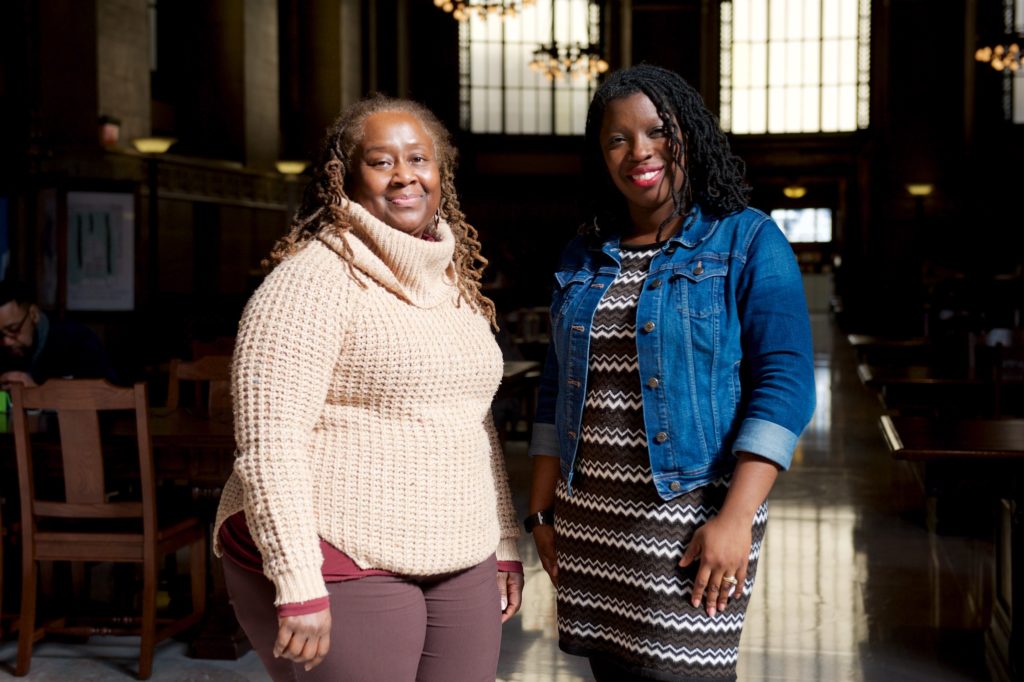
Vetta Sanders Thompson: Riisa is so focused and she tells her story so articulately, I’m not even sure what to say. I’ve been doing this for quite some time. I moved to St. Louis for my internship related to my doctoral degree and I intended to be here one year and then leave. But I ended up taking a position at Washington University and the School of Medicine’s Department of Psychiatry. I only remained for one year. But after that one year, I went back to the Missouri DMH where I had completed my internship. It was then called the Malcolm Bliss Mental Health Center and that mental health center provided tremendous training. It changed the way that I looked at mental health because we did more than work inpatient units doing what we traditionally did, which would have been assessment and working with the psychiatrist, or maybe doing some individual work. There were some really innovative leaders at that time and we were trying some of the newest group therapy. So I was implementing a group therapy for patients who were still in the middle of their psychosis, but getting them to come together to interact with each other, to interact with us as staff, to talk about their feelings, their ideas, whether they were trying to get that down with drawings on paper or share that verbally, not accepting that the person was so removed from the here and now that they couldn’t act to integrate.
We had a day treatment program where we did social skills work. We did personal problem-solving. Planning for their life away from the treatment facility. We took people out and walked and exercised together. We shopped in Soulard together. I was realizing that the people I worked with in that facility were human beings who had lives and you had to facilitate the return to their lives. We had outpatient therapy to help support people. There were integrated teams before integrated behavioral health was a thing. We had social work, psychology, nursing, psychiatry, and the pharmacy was there. We had everyone at the table thinking, planning, and working together to make a difference, and that training stuck with me. That model stuck with me.
Sometimes when I talk to people and they’re telling me what’s being done now, I think we’re actually moving back to what we knew and what we had at some point earlier. So I’m always advocating to get back a little of what I thought we lost when we lost that facility and that way of being in the community and working with a community. It wasn’t perfect and it was an institution, but it was innovative. People on that staff weren’t afraid to walk around or interact with the clients. I had some faith that patients could come out and be okay, and continue to receive supports. So that was transformative for me and I’ve been in St. Louis since that time.
As the program started to shift, I felt like I needed to be in a different venue to have more of a voice and more of an influence. You can’t change much sometimes on the inside. Sometimes you need to be outside to do that. So I had the opportunity to join the faculty at the University of Missouri St. Louis. Again, that was a great place. There were people in place who supported work in the community. You don’t find a lot of academic institutions that don’t mind faculty who are willing to be out in the community. They were like, “We’re a land grant. That’s part of our mission. Go.” And they had some programs in place to help facilitate that. So that was a part of the work. I was in the psychology department. We had a community clinic that continues to operate and has grown since I left. It actually provided services to the community at large, not just on the campus and I had the opportunity to train and support students there.
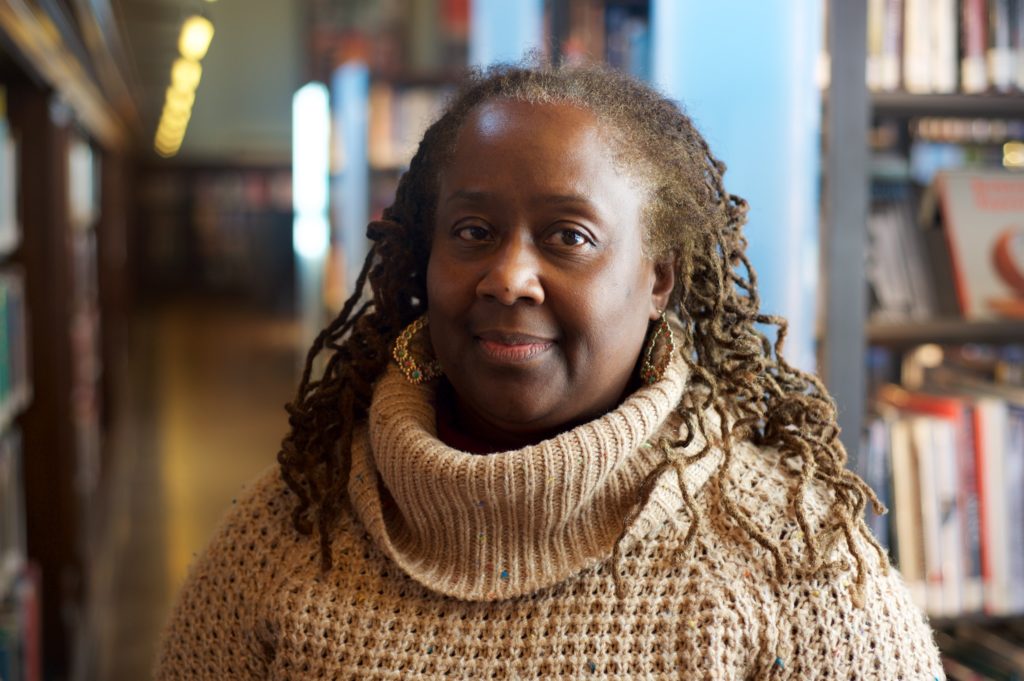
And the work grew because my research focus was always different than my mental health focus. My research focus was racial identity. And when you study racial identity in the United States, you quickly begin to understand the relevance of history and experiences of discrimination and how they emerged in our society. And you have to think about how that history, that legacy, affects people. My mental health background drew me to the fact that we talk about the economic impacts, and they are real and permanent. But no one was really paying attention to the mental health impacts. So I developed an interest in understanding how those experiences of discrimination and the stigma of having a racialized presence in this country were affecting people’s mental health. My research would have moved in that direction, but with meeting amazing colleagues here, I found myself working with colleagues who are working on community-operated services.
When you study racial identity in the United States, you quickly begin to understand the relevance of history and experiences of discrimination and how they emerged in our society.
Again, centering on the people who are receiving services and making sure they have a voice, they’re included, they are in control of their lives, led me to think about people who have multiple stigmas. What does it mean to have a stigmatized identity? Because you have a mental health condition. Because you don’t have adequate financial resources. Because there’s stigma to being poor and in poverty. Because you’re a member of a particular racial or ethnic identity. Because you’re a woman. What does it mean to have all these multiple identities? So I worked with people to look at that, but all of it always brought me back to the whole issue of how do we as providers learn to listen, to hear, and to respond to what the contexts are in which people have to live their lives, particularly when it includes these stigmatized identities.
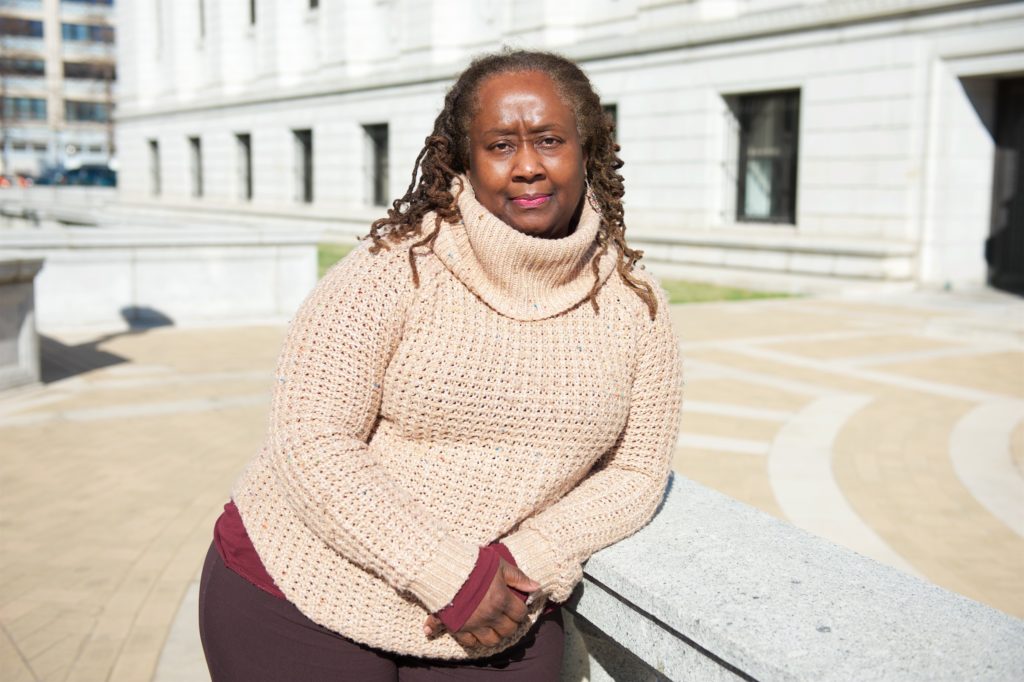
That’s where the cultural competence piece and the respect piece come in. But how do you train people on that? How do you convey that? How do you help people to understand it’s not a course. It’s not an activity. It is a way of being in the world. And if you can’t bring yourself to move outside of your space and interact with people, you are delaying your ability to get there. The university allowed me to create courses that went beyond what I would be able to do in an organizational space. I had a Psychology of Oppression course. An African American Psychology course. And, of course, my Multicultural Psychotherapy course. That also allowed me to think about how to do this work and how to deliver it. So doing some trainings with professionals, not just psychologists and not just in an academic environment, led that work to continue.
It became an effort to blend, and even as I moved to other institutions, I thought about how to move this work across disciplines. When I started working with people in public health, I thought, “How do I help them understand what I’m doing over here and why?” There was already a conversation there and in health, so I didn’t have to work as hard. And so what I found was I can try and test out things here in conversation with these people and translate them over here and just keep the train moving. I started to realize there was a growing movement, so I could pull things that people in government institutions were working on, like accessing the cultural competency assistance through the Office of Minority Health. And instead of getting people to create resources, use the resources that have been created that are out there. Don’t struggle. People can help make this simple.
Instead of getting people to create resources, use the resources that have been created that are out there.
I figured out that I can translate the material and say, here are all of the citations, this is what it means for funders, this is what it means for providers, this is what it means for educators, this is what it means for researchers, and work to share that across a number of places. So blending my academic and research backgrounds into ways that we can assist people working in the community, actually delivering the service. Sometimes I tell people, “I’m not doing anything particularly useful because I’m not seeing patients anymore. I’m not doing a lot of programming.” But, for me, we need to have more respect for the people who actually do the work. I always say, “We undervalue people who actually do the hard work, and the hard work is delivering services, making things, producing things. And I don’t do any of that. But I have tremendous respect for the people who do. And this is what I can contribute and share.”
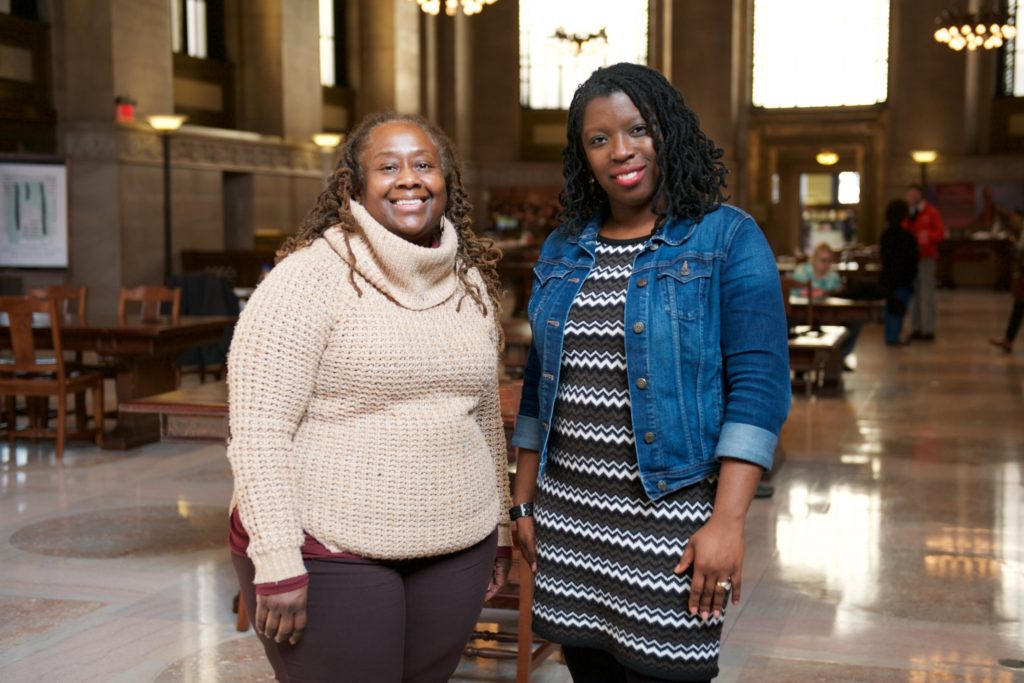
Much of what I’ve done is just because I managed to meet wonderful people with great ideas and we can get together and collaborate to make some good things happen, like the project that Riisa described. They asked me if I would participate. There were great people around the table, a lot of great ideas, and people who had access. So things happened. But things don’t happen when it’s one person. Things happen when there are many and diverse people. And sometimes you don’t even have the same ideas, and you’re not necessarily on the same page at the beginning. But being able to sit and work until you find that common ground, you find that purpose, and then you can figure out how to move in concert to make things happen.
How have you been able to touch upon the calls to action that you’re dedicated to working on within your work?
Riisa: One of the things we always say with St. Louis Region System of Care, one of our guiding principles, is to not create a new something, but to elevate and advance those things that have gone before. So we stopped what we were doing and brought the calls to action in and crosswalked them with other regional reports. So with the calls to action and the community health improvement plans for both health departments, city and county, and the needs assessments that are being conducted by both Children’s Service Funds, city and county, where is the overlap? And when we think about the goals and objectives of the System of Care, where do all of these fit in and how do we promote and advance what’s already existing? Is there a table that is being convened that makes sense to continue to move forward because they have energy, they have momentum, and they have the right folks sitting around it? Can we then lend whatever we have to offer, bring that stone to the soup, and move that forward rather than saying, “But we have a thing over here, too.” That’s always been our approach in thinking about how we move things forward. So we specifically and intentionally read the Ferguson Report and call out the calls to action. We have our folks read it and ask them, “Where do you align? Where do you fit into this? And how does this help us move the objectives of System of Care forward?” It’s very intentional.
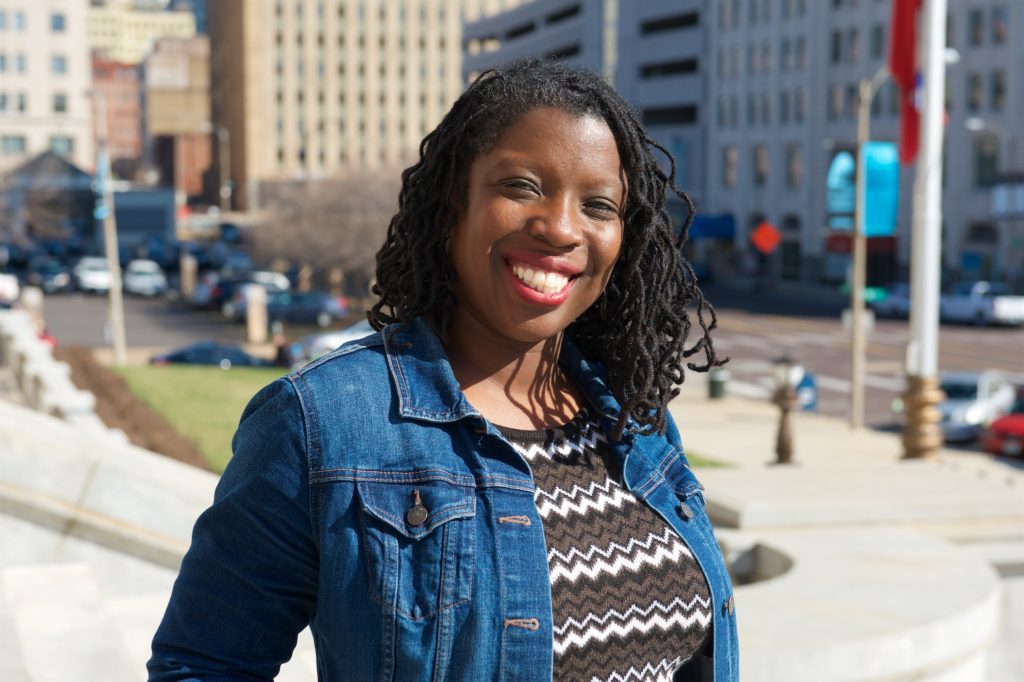
The other thing we try to do is make sure that when we come up with anything, or if it makes sense for us to be on first for whatever comes up, that we are able to articulate in community meetings how it aligns with other efforts and initiatives. We don’t ever want to do anything in a silo or on parallel tracks. We have a limited number of resources, time, staff, and finances. So how can we leverage economies of scale and maximize impact by providing some effort and energy to those things that need to exist? One of the things that I do when I go into meetings is ask, “What does applying an equity lens look like in this conversation?” I always ask, “The folks who are affected and impacted by these services that we’re talking about, where are they in the conversation? Where is there opportunity to provide their expertise? Where is the panel of experts, if you will, in this conversation?” Folks have started to anticipate that when I’m there I’m going to say two things – community and Racial Equity. Because I don’t feel like we’re successful moving forward if we’re not including these two aspects of the conversation.
People are literally dying because of our bad policy and because of our bad practices.
If I can borrow Forward Through Ferguson’s term, radical collaboration, I really try to live that. I see it as my responsibility to interject that even if it’s not my specific work, but to make sure that it’s always a part of the conversation because that’s how we change our region. People didn’t understand how to bring it into the conversation. So being able to go through the difficult conversation of working out, “What exactly, tactically, does Racial Equity look like specific to this?” There’s another conversation that’s going on around health in all policy and I’m all for it as long as we’re thinking about health broadly because I’m all about behavioral health in all health, and health in all policy. So it’s really about challenging us as we sit around the table to think about, “How is this impacting different segments of our population in different ways that we just hadn’t thought about?” We can’t continue to do the same thing the same way. We have to be intentional because, while we’re not thinking about it and going about it with our well-intentioned work, people are literally dying because of our bad policy and because of our bad practices.
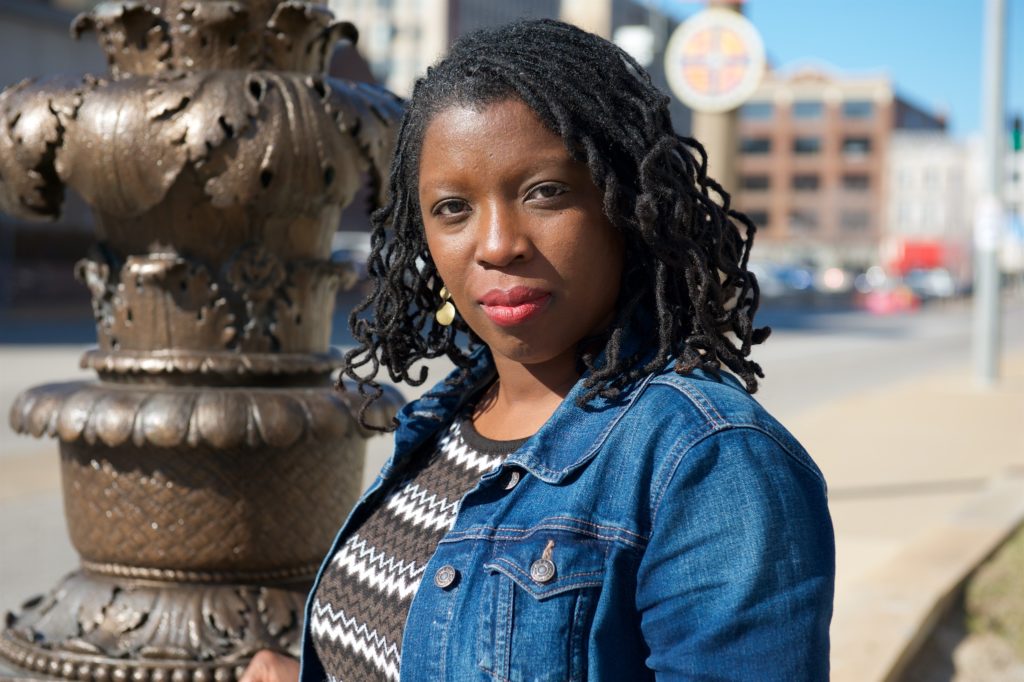
What does it look like when someone’s not taking Racial Equity into consideration?
Riisa: The beautiful light I see in my three-year-old son’s eyes becomes tragically dulled like that in my 23-year-old son’s eyes due to the unrelenting stress of navigating unjust, inequitable spaces. Let me give a clear example with what’s going on socio-politically today. We have these conversations about gun violence and we have these conversations about safety in schools. And then we have all these well-intentioned people who really want to do something and want to make a difference. And then you have suggestions, like, all teachers should be armed. My immediate initial reaction is, “So for the Black children who already are disproportionately targeted by disciplinary procedures in schools and have abysmal outcomes comparatively, now you’re giving a weapon to those folks who have not yet understood the cultural impact in the classroom. And now you’re giving them permission to mortally wound my child.” It’s important that we are intentional and specific in calling out why that’s problematic so that we can start to change the way that we’re thinking about things.
We specifically and intentionally read the Ferguson Report and call out the calls to action. We have our folks read it and ask them, “Where do you align? Where do you fit into this?
When we think about transportation and where the Metro line should go, when we think about The Loop trolley, who is being cut in and cut out by these policies? Because it might just be a bus line to you, but that bus line is access to economic opportunity and jobs. That bus line is access to the behavioral health service provider or the primary care service provider when my community is already disproportionately impacted by hypertension, heart disease, diabetes, and everything else. But now it’s harder for me to get to the service provider and, for the record, the transfer only lasts so long. So even if I can get somewhere, I can’t get all the way back. What if I have to drop my kid off first because I can’t bring my child to this appointment and now I’m missing how many hours of work and that’s impacting my job because I’m not on salary, I’m receiving an hourly wage. So in receiving an hourly wage, how much flexibility do I have? And then we get upset because people are “non-compliant,” so we want to kick people off of our patient rosters because they’re not coming to their appointments without considering what the impact is when you apply a Racial Equity lens or when you start to apply a health in all policy lens. Then we start to understand how it’s not just this little piece that we’re working on. It’s all part of a bigger, more complex picture.
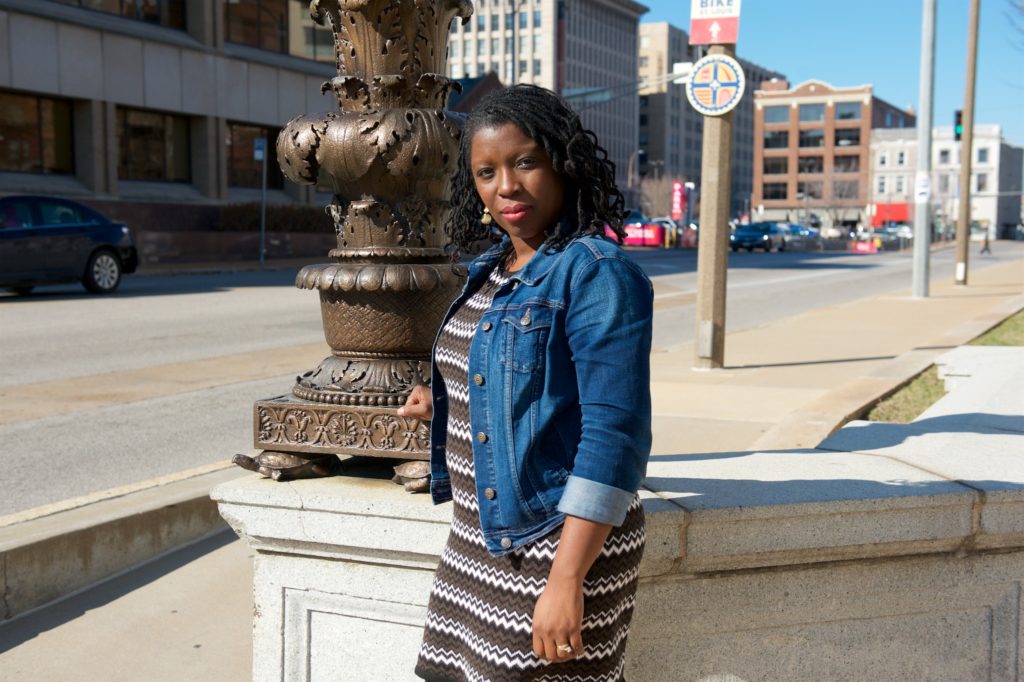
What was really cool for me was sitting with the health departments during the health improvement planning process that now includes all of the hospital systems and a wide range of regional health partners. So sitting in part of those conversations, we kept pushing, “If we’re not talking about social determinants of health, then we’re not really talking about health.” To see the discomfort in people’s faces as they said, “Wait, we can’t be accountable and responsible for that as a health department because if we put this as a priority, then that means we have to figure out how to measure it. And if we don’t meet these standards we’re in trouble.” And I’m sitting there thinking about wonderful initiatives like Generate Health St. Louis when talking about the fetal mortality rate, they are challenged to say what the real problem is: It’s Black babies, right? It’s not all babies. But it’s Black babies and it’s Black mamas that are dying. So are we willing to actually call it out and say what it is? Because if you’re not willing to state what the issue is, how are you going to then measure your progress towards addressing that issue? I’m proud to participate in regional efforts are willing to tackle these difficult conversations and look for tangible solutions. That’s what taking Racial Equity into consideration looks like. And it scares folks, but we are moving in that direction.
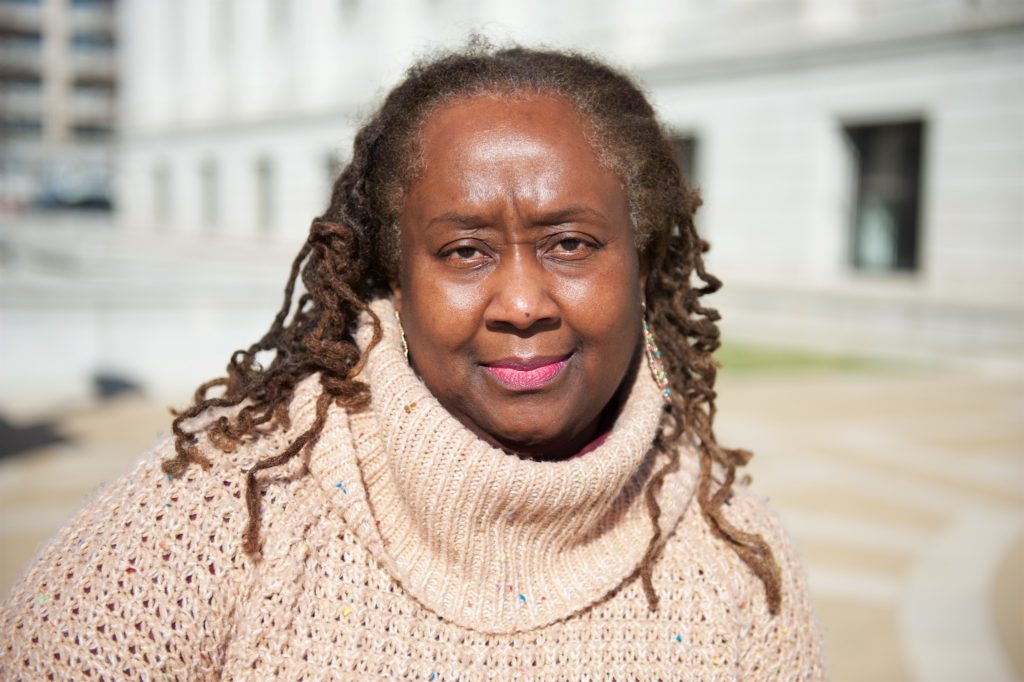
Vetta: I’m glad you said that because that’s the other piece. Accountability. And really talking to organizations about the fact that they can put something in their mission statement, but I can tell whether there is real commitment by their approach to data, data use, and analysis. You can do the same thing with funders. But who are you holding accountable? If you distribute funds and you tell someone one of our most troubled zip codes is 63107 and we want you to provide services there. And a year later, you’ve given them money, and they’ve provided the services, but lo and behold, there are only two or three more people from that zip code who’ve been provided those services… “Ma’am, we tried. But we couldn’t reach anyone. No one would participate.” Where’s the accountability?
Do you continue to provide them the funds to deal with a problem that we know is more prevalent and in this area, when everyone else under the sun, other than the people in that area, are receiving services to address that problem? That can’t be permitted. At some point, funders are responsible for saying, “Our dollars are meant to reduce or to make a difference in these issues. Either you can meet the criteria, the standards of providing the services in those most critical areas, or you can’t. And if you can’t, we’re moving these dollars to those who can, or we’ll have to help stand up new service providers who can meet those needs in those areas.
Similarly, participants who are doing okay and getting into the areas, but have high dropout rates or the outcomes aren’t the same. “Well, are you monitoring for that? What are you doing when you note that? How do you change your services? How do you change your staffing? What are you doing?” It’s what businesses do – continuous quality improvement. Apply it to the social service sector. You can’t just get funds and keep doing things and have no accountability for the outcomes. They’ve got to move or you’ve got to demonstrate that you’re changing and trying to figure out how to improve.
What else is entailed to get Racial Equity injected into asking these questions to make people think?
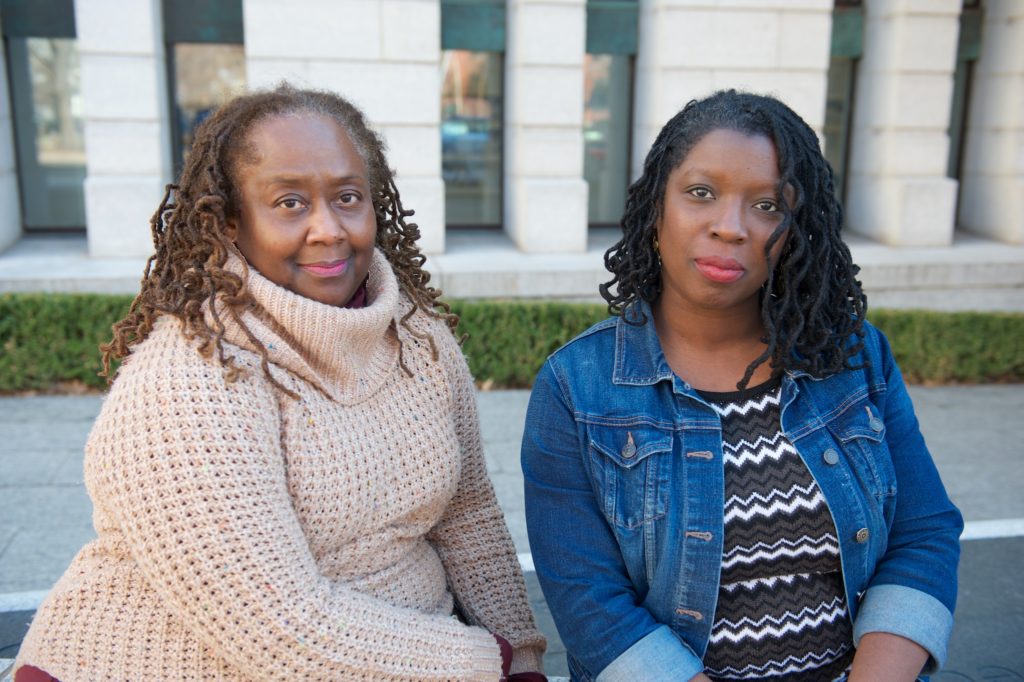
Riisa: I think it’s also making it practical for folks because a lot of times people don’t put Racial Equity into their work — not because they don’t believe it’s important, but they don’t know how. They literally do not know, “How can I do this in my work?” You have to create handlebars for folks. They need something to hold on to. They need tools that can show them, “What are we measuring? How do we measure? What’s even the baseline?” Most folks don’t know that. And, yes, it’s scary to say, “Okay, now once we know, we’re accountable for what we know.”
“How can I do this in my work?” You have to create handlebars for folks. They need something to hold on to.
Vetta: Social determinants. How do we do that? Let’s start with, “Where are you advertising your job openings? Do you make that information available? Who refers to you? Are you seeking referrals from a diverse pool of people? Do you ever look in the community to spot where you might provide training in order to facilitate employment? How much do you support other organizations working in that community to improve their work and make it better?” So if we’re talking social determinants, you have a role to play even there because who you hire and how you hire matters. Maybe we think about a conversation with Metro, “Our workers come in at this time and leave at this time. We really need a route that supports this,” Metro might kind of work to see what they could do to their schedule because that helps maximize ridership. “When do people need to be here? When are they leaving?” “So I can get this bus with this number? Oh, okay, that might work.” But it means you’re thinking about this. Build it into your strategic plan. Sit down and problem-solve the way you do anything else with who’s at the table.
Riisa: It all seems very philosophical and amorphous and squishy and social worky. I’m okay with social worky, but I’m also outcomes-oriented because, at the end of the day, people are dying, literally dying because we haven’t given this enough attention and energy. So it’s not just something that would be nice to include. This is life or death.
What would help you do the work that you do better?
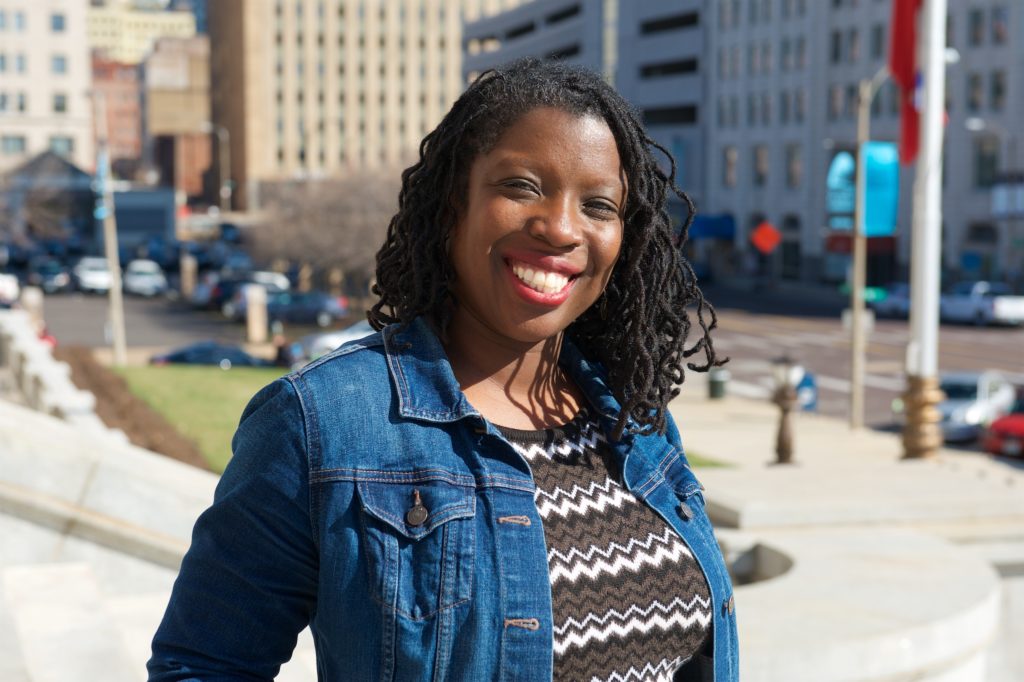
Riisa: I go back to radical collaboration and what partnership actually means. So, for me, if I say that I’m partnering with you, if I say that we’re collaborating in some work, that means something very specific. It means that even when you’re not in the room, your work is present because I’m going to advance it. I’m going to amplify it. And I’m going to make sure that things are connected. I don’t think we partner that well in that way. That would move the needle a lot further, a lot more quickly if we took it as our responsibility, and we owned what that partnership meant, and I don’t have to call you to say, “You should really come to this meeting. It would be great if you can be here.” Because if you’re not, I’m thinking, “Is there something that I need to be saying that’s important to move this conversation forward?” That’s the kind of partnership we need if we’re really going to move the needle on this.
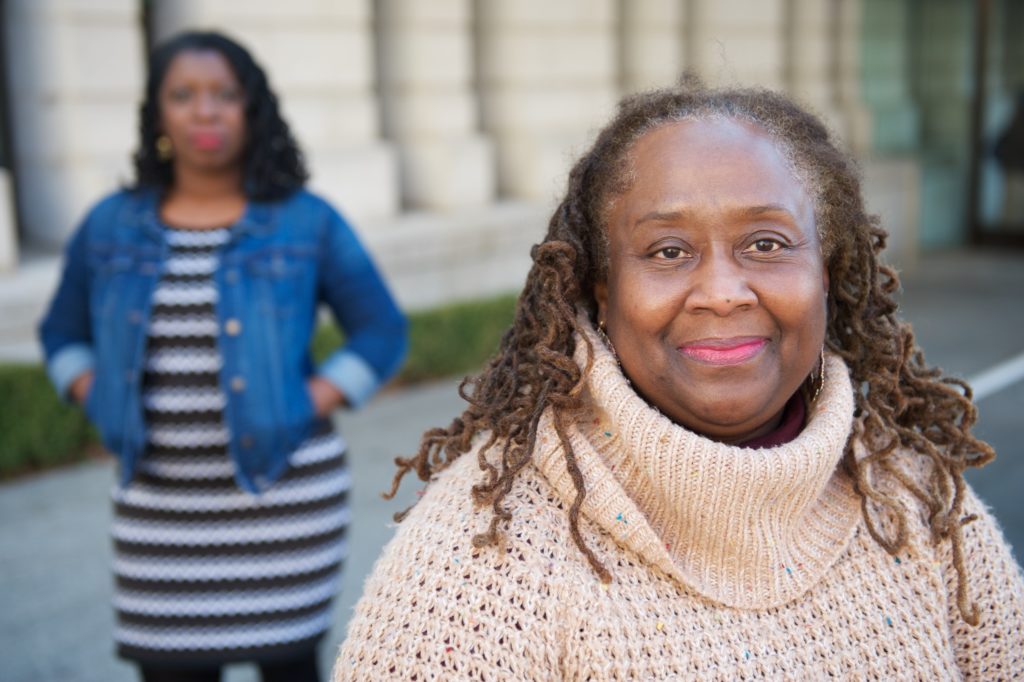
Vetta: I am committed to the fact that we have to share what we know broadly, not just across organizations, not just among professionals, but with the community. People ask me, “Why are you trying to show or teach this to community members? You know you’re way above their heads.” And I’m like, “I fundamentally believe anyone and everyone can learn virtually anything and everything if there is someone willing to share and to teach.” People may not understand every bit of it. When I was in school, I clearly did not understand everything. Then, later on, you’re doing something, and it’s like, “Oh! This is what they meant.” But we don’t want to extend that privilege to members of the community. Look, we may have to do this more than one time. People will be exposed to information more than one time, but they need that exposure. We need to have faith that they have ideas, they know things, they have things to share and give too.
I fundamentally believe anyone and everyone can learn virtually anything and everything if there is someone willing to share and to teach.
That’s the reason for Community Research Fellows Training. That’s the reason we’re trying to adapt that to work with Project LAUNCH. Whatever we know to do, we’re going to share or we’re going to create something new. When we started doing CLAS trainings for the organizations, we provided it to the community members as well. So that not only did the organizations know what their responsibilities were, community members knew as well. And more than that, the point I made to them was, “You also know what your responsibilities in this are,” because I talked to them all the time. “If there’s a problem and you’re not talking about it, if there’s a grievance process and you’re not using it, you’re not doing your part. Here is where it should be. Here’s how you find it. This is what you’ve got to do.” And they’ve learned to ask those questions: “Well, where do I complain?” People have to know and we have to create situations and that confidence so that they will share their voice.
Do you know the idea behind the Racial Equity Fund? How would it benefit what you do?
Riisa: Well, that’s typically not a funding pool that’s available for people to tap in to, so it would eliminate some of the excuses because sometimes when you have to think about training, or retraining, or developing practical tools and strategies for addressing Racial Equity, that takes time. That takes effort. That takes staff. It would be wonderful if we could say, as a region, “We are so committed to this. When those needs arise, we are going to collaborate to make sure it happens. And by the way, we know that you can’t do it for free. So here are some funds and some resources to do it.”
Vetta: Can we increase employment opportunities in this area where we see a diminishing ability of people to be employed? Is there funding for short-term small pilot projects that demonstrate feasibility? Then we can go elsewhere for other funds. Sometimes we’ve got to test things out and know that that pool of money exists for those experimental projects. We can do it the way it’s done globally sometimes – seeding microenterprises so people aren’t always looking to work for someone else, but they can create their own cottage businesses industry. For all the losses that communities of color have experienced throughout history because their efforts at entrepreneurship had been undermined, and physically and deliberately destroyed, a Racial Equity Fund could go a long way in moving the community back toward that spirit that says, “We used to, and we can do it again.”
And with respect to health, it could help in seeding some organizations to be able to provide services in low-income communities. With individual providers, if you’re trying to take care of your family, and patients can’t pay for your service, they can’t do it for free and feed their family. Now we’re all starving and looking for someone to come in and provide social services. So we need to be able to support some of those health and behavioral health efforts, too. The reality is that we know members of these diverse communities are more likely to work in these diverse communities and be willing to provide services in these diverse communities than members of other communities. These are also people who are coming from lower-income backgrounds and taking on more debt in order to be in these positions, so they’ve got to be able to pay that back and make money. If we do not do some things to assure that they can come in and fill these needs and spaces in these communities, it’s not going to work as well.
Riisa: If you think about the carrot and the stick, it provides an additional carrot. Why would people even be engaged in Racial Equity? We already know, the data shows us, that the disproportionate impact is borne by communities of color. And a Racial Equity Fund can be a carrot if you can measure and demonstrate how you are reducing this disparity with these outcomes, then there is access to additional resources to continue that work. But it has got to be tied to accountability and measurable outcomes.
How can other people think courageously about the work that they do?
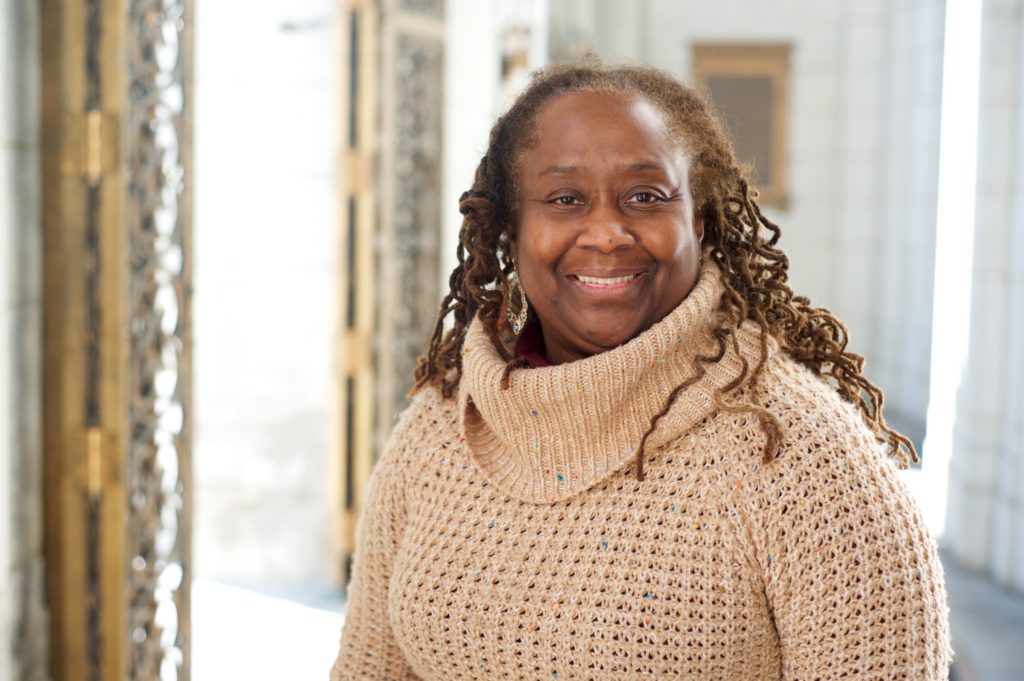
Vetta: It’s finding the space where you’re passionate. That’s what has always motivated me. I try to make sure that I know what I’m doing and respect what other people know so that I don’t have any false notion that I’ve got to do it all myself. I know there are other people that if I can’t do it, they can do it, and I’m willing to work with them. But I stick to what makes me passionate.
How can people be held responsible and more accountable for understanding and changing things like policies, behaviors, biases, and history starting now?
Riisa: It goes back to building those relationships and challenging yourself to ask, “Who is missing from your table?” If you want to be accountable, have community members at the table and come up with some of these ideas and see what the response is. If you are invested in this work and saying that you want to make a difference, you do not make a difference without having folks who live that experience every day, without having them not just as your token, but as your peers who are able to lead, who are able to inform, who are able to pull your coat tail and be your compass. And if we’re going to get real about this, and we’re actually going to make change – have some young people at the table who are experiencing this firsthand.
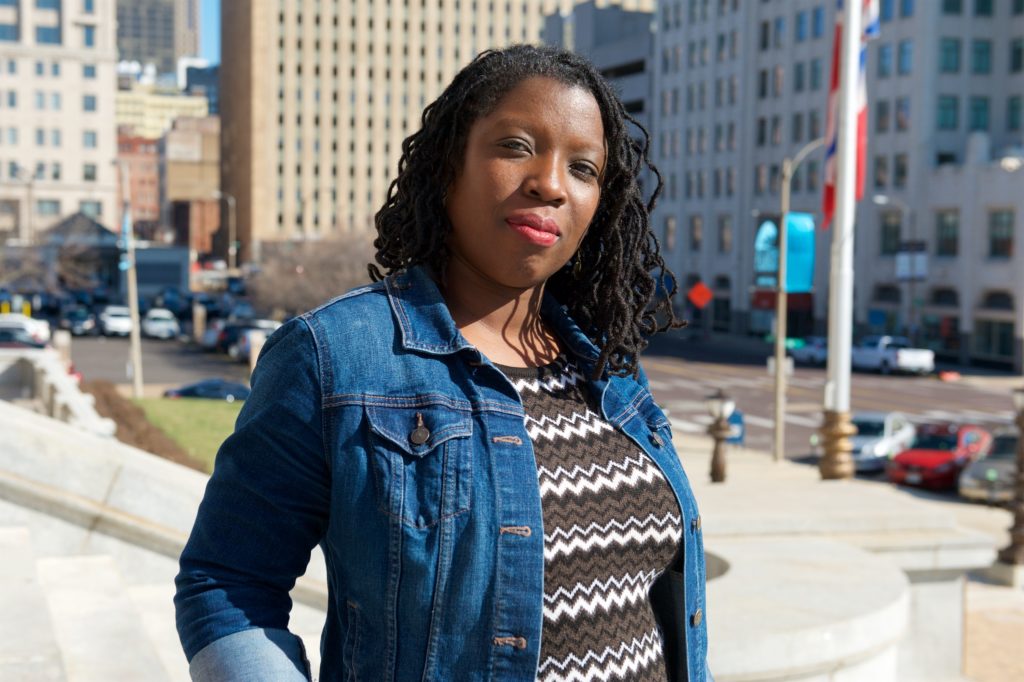
There is one sound bite that resonates with me, and I carry with me in all of the work that I do. We were talking about trauma in the community and, specifically, what the impact and the influence of trauma is on young men of color. I brought my kids with me to one of these events and, I absolutely adore Jade Harrell, because she’s one of the few people in the world who could do this, but she took my son’s headphones off of his head and said, “Sit down, Reg. We’re gonna talk.” He said, “Now, Ms. Jade, you know, I’m only doing this because I love you, and I love my mama.” So he sat down, and they had a conversation.
If we’re going to get real about this, and we’re actually going to make change – have some young people at the table who are experiencing this firsthand.
No one else could have gotten away with doing that to him. She was talking about trauma, and she asked him, “What do young people need to know and what should we say to young people?” And he said, “Ms. Jade, you don’t have to tell me I’m traumatized. I already know. If I’m focusing on the trauma that I’m experiencing, I can’t do the things I have to do just to survive. I can’t live. I’m doing everything that they say I’m supposed to do. I’m going to school. I’m working. And they won’t let me live. You want to know how to stop traumatizing me? Stop killing us. We have the answer. Young people are just the right folks to call you on the carpet because they hold us accountable and responsible for where we are today. From their lens, there have been generations that have marched and there are still these environments and circumstances that we’re living in. So what action are you taking? You want to be accountable? Those are the folks that you need around the table.
Vetta: And if you follow the places where people are blocking or attempting to block civic engagement, barriers go up to voting. It is not an accident. We all have to be conscious and mindful and we have to fight. And when people are resistant to fighting that fight, to keep those barriers down or to take them down when they go up, it tells you something. You’ve got to be mindful of that. You got to be mindful when people are telling others, “Don’t march. Don’t protest. Well, you can protest, but do it right here.” Or, “You can say something, but you can’t say it like that.” That’s when you know that there are barriers being erected to the type of engagements that are going to keep everyone accountable from politicians to advocates to social service organizations – when we want to control the space, the forum, the timing of every activity that has moved us forward.
Inclusion has to be brought in, and that’s a message that we have to keep delivering in all communities because it can’t just be people like me. It’s got to be people like me, but other people who have that same experience of being othered, being excluded, being isolated, and marginalized. We might not be together, or collaborate, or be on the same page every day. But as long as these issues cut across areas, we’ve got to understand that we need to be looking to each other for support, for innovation, for activity in order to move and progress.
Riisa: Right. There’s such tremendous energy and potential that we don’t tap because we underestimate the wisdom that our youth bring to the table. So for me, I check myself based on what I call my panel of experts. The data and the research are critically important. We have to be informed. We have to have executive leadership if we’re going to move things forward. We have to have policymakers and legislators around the table if we’re going to move forward, but we also must have the boots on the ground, the front line staff who understand, every day, because they’re actually doing the work. Because if you’re going to fix a macro system level issue, you’re not even going to know what it is until you talk to the direct service providers who are seeing it every day. They’re the ones who find the patterns and understand before we do what’s going on and what needs to be addressed. If you’re not talking to the folks whom you are serving, you are doing a disservice and your panel of experts is incomplete. If we don’t have all of those voices informing the work that we do, why we’re doing it, how we’re doing it, with whom we’re doing it, then we’re completely missing the mark.
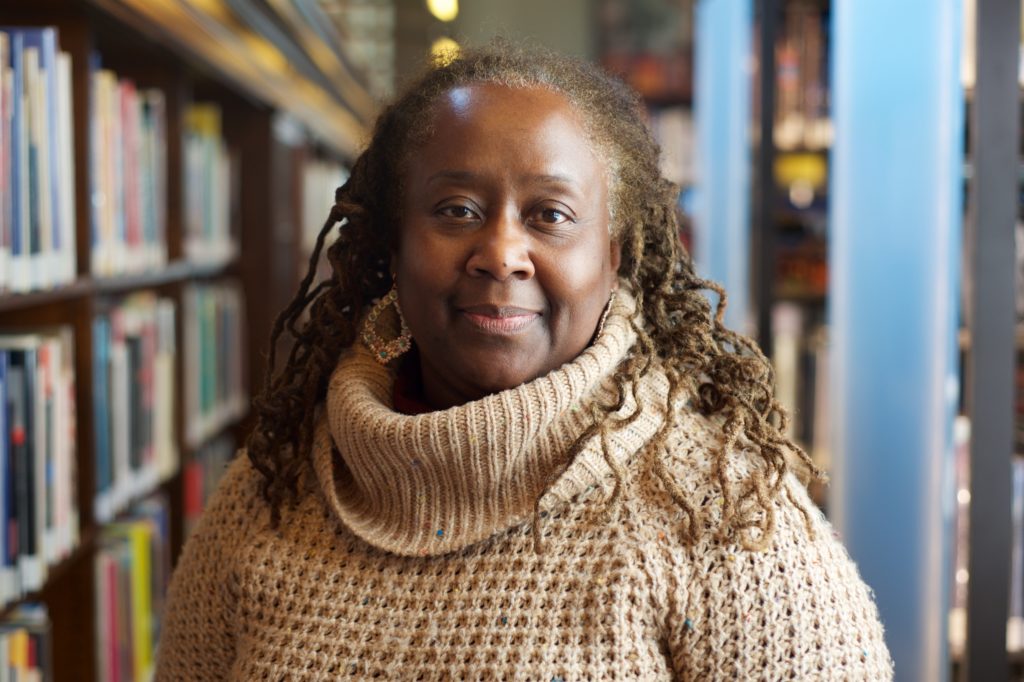
Vetta: Years ago, I was at a school, and we were doing a group. I was talking to the kids about how people perceived them and how they perceived their community. And one of the kids told me, “Look up.” So I looked up, and I’m looking at the ceiling and the ceiling had water stains, it had plaster that was loose, it was clearly cracking. It needed some work. And the student said to me, “Every day I walk into this building, I see what people think of me and what they think of my community. The whole condition of this building tells you what people think of me.” He showed me around and said, “You see these books? This tells me that…’ and I was floored. I’d never anticipated that they thought that deeply, that they recognized how we send messages. Our language. I was like, “These kids. They know. Sometimes they know more than we know, and they certainly know more than we give them credit for.” You know, kids can shut you up.
We had another incident when we weren’t intending to talk about trauma, but we were talking about how they could assist in decreasing violence in the community. And a young woman started telling us her story about the loss of her cousin and what she said. As a clinician, I never forgot this woman because she said, “Everybody knew I lost my cousin. They knew he died and they knew I was there and they knew what I went through. And no one asked me, ‘How am I doing?’” She said, “Just ask me, ‘How am I doing? How am I coping?’” Simple questions. We would ask a stranger on the street. And these kids are in a building where we say we care. So, you’re right, Riisa. If we want to know why things are happening the way they’re happening, we really need to talk to our young people. They see things, hear things, and experience things that would open our eyes. That’s the reason those kids in Ferguson lead the way. That’s the reason those kids in Parkland are leading the way. Because of the way we react to younger people, they bear the brunt more than we do.
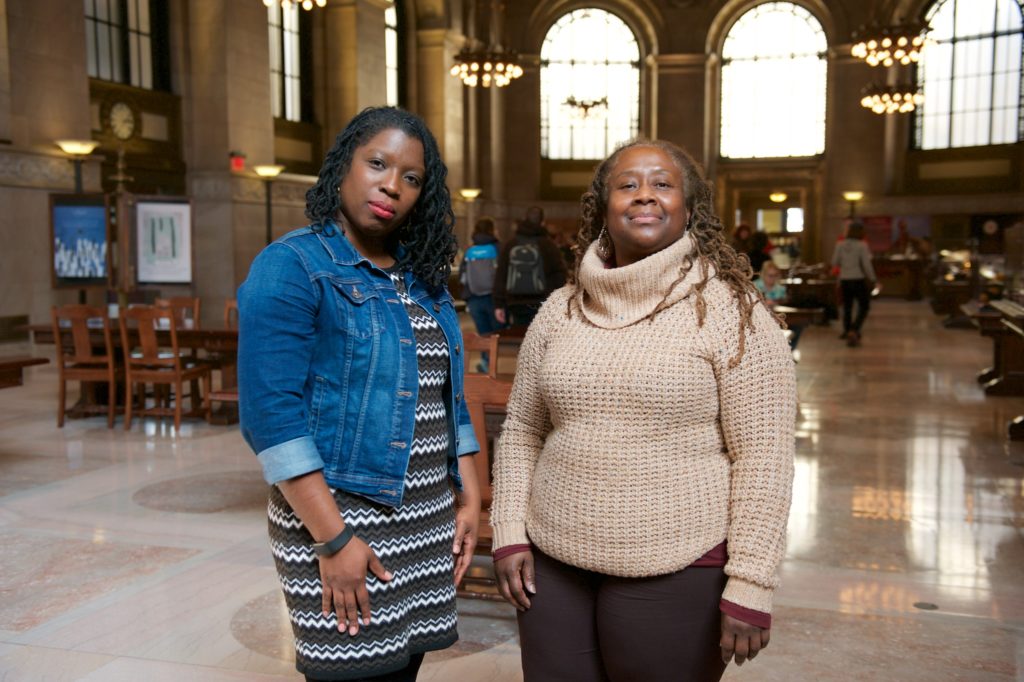
Riisa Rawlins-Easley and Vetta Sanders Thompson. (Photostory by Lindy Drew/Humans of St. Louis.)
What does a racially equitable St. Louis look like in 2039?
Riisa: When I started participating on the Mother to Mother panels talking about “The Talk” that we as Black moms have with our sons, one of the reasons why I did that is because the pain of having those conversations and seeing my son’s impotent rage is devastating. It’s absolutely heartbreaking. So I put myself in a position to have conversations and do work that can be, at times, soul-draining. It can be very painful because it is very personal because I have to hold hope that when my three-year-old is my 23-year-old’s age, his experience will be different. If I’m seeing a racially equitable society, my baby is not going out of the house fearing that his life is in danger just from doing what he’s supposed to be doing. In my work, a racially equitable society means that we are so dialed into what the inequity has been that it’s not a separate conversation, but it’s a part of everything we do so that we are intentionally about equitable access and outcomes in every piece of our work.
Vetta: My daughter and son created the vision that I have because they had this conversation where they were talking about the luxury of waking up in the morning and not thinking about how you groom your hair or how you choose to wear your hair, how dark your skin is, your intonation, the rate at what you speak, keeping all indications of emotion out of your voice, the smile you’d have to walk into your workplace. Just all of the everyday cares that people of color must have in order to remain employed, remain out of the grasp of the legal system, remain in a space where opportunities may be opened up to you. The fact that every nuance of your being has to be calculated to be acceptable in the larger world. They were like, “It’s a luxury, and one day I’d like to wake up and just be. And feel that luxury and just be.”
Riisa: How sad is that? I hadn’t even thought about what that might feel like. That never occurred to me that there’s an existence like that. That’s deep.
Vetta: I know. It never occurred to me. But the fact that my kids think about it? That it could be? And we don’t have it…?
Riisa: That is deep. It’s hard to walk that tightrope of visibility and invisibility. So you want to be invisible enough to where your Blackness doesn’t offend or make people fearful, but you have to be visible enough to where your gifts and your talents and your work are acknowledged to allow you to achieve. We are taught to be invisible in order to be safe, and it’s a very hard switch to flip back and forth when it is actually maladaptive for you to be invisible if you’re going to be successful. But then you have to figure out how to be visible in a way that’s not offensive.
Vetta: Or lonely. Or alerting.
Riisa: Yes. It’s EXHAUSTING.
Vetta: And my daughter said something interesting about that. She said, “I don’t want that to stop for them. I just want it, too.” Everyone should have that freedom to be.
Riisa Rawlins
Assistant Teaching Professor, University of Missouri – St. Louis, School of Social Work and Project Coordinator for the Behavioral Health Workforce Education and Training Program
Vetta Sanders Thompson
Professor, Brown School at Washington University in St. Louis and Co-Director of the Center for Community Health Partnership and Research

